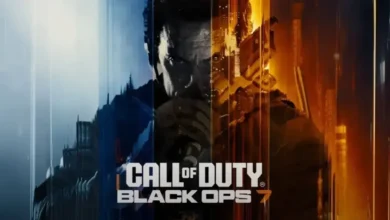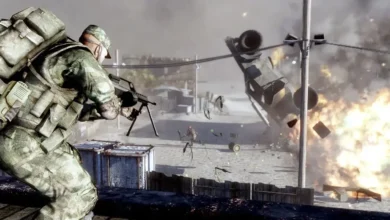
The word Mafia carries a complex web of meanings: organized crime syndicates, shadow governments, and hidden power networks operating beyond the reach of the law. Over centuries, the term has come to signify both fear and fascination.
Whether you are a student, journalist, or simply a curious reader, this piece will guide you through the deep layers of Mafia influence, from backroom deals to global crime networks.
The first half will follow a Q&A style, addressing the most searched questions online; the second half will be a narrative analysis revealing the inner workings and possible future of organized crime.
Let’s begin by tracing the historical roots of the Mafia and its transformation into a global force.
What does the word “Mafia” mean and where did it originate?
The term “Mafia” is widely believed to have originated in Sicily, Italy. Initially, it referred to local groups protecting community interests in areas where the state’s presence was weak. Over time, some of these groups evolved into organized crime syndicates, specializing in extortion, smuggling, and contract killings.
What is the organizational structure of the Mafia?
The Mafia typically follows a strict hierarchy: a boss at the top, followed by underbosses and caporegimes, then soldiers and associates. This structure ensures secrecy, discipline, loyalty, and the division of criminal activities such as racketeering, drug trafficking, money laundering, and political manipulation.
What types of crimes are associated with the Mafia?
These include extortion, organized murder, drug and arms trafficking, human smuggling, money laundering, political corruption, and infiltration of legitimate businesses like construction, waste management, and transportation.
How does the Mafia affect the local economy?
The Mafia disrupts fair competition, inflates business costs through “protection fees,” and deters both local and foreign investment. By injecting illicit funds into legal sectors, they distort market dynamics and create long-term economic instability.
Why does the Mafia survive despite state crackdowns?
Several factors explain this resilience: corruption within law enforcement, fear of retaliation among witnesses, insufficient resources for anti-crime agencies, and the Mafia’s ability to embed itself in poor communities by offering jobs and informal “protection.”
What is the difference between traditional Mafia and modern organized crime groups?
Traditional Mafia groups rely heavily on family ties, cultural rituals, and local dominance. Modern groups can be decentralized, tech-savvy, and global — using cryptocurrency, the dark web, and offshore networks to operate beyond geographical boundaries.
The Mafia as a Parallel Power Structure
The Mafia often begins by filling a vacuum left by weak governance: settling disputes, providing “security,” and solving local problems. These functions evolve into economic and political dominance when combined with coercion and illicit profits.
Economic Methods: Money Laundering and Market Control
Successful Mafia organizations invest in legitimate businesses as a cover for laundering illicit profits. Real estate, import-export companies, and construction firms are common fronts. This blending of legal and illegal operations creates a parallel economy that is hard to dismantle.
Political Corruption: The Mafia’s Invisible Partner
Bribes, backroom deals, and alliances with corrupt politicians protect the Mafia from prosecution and give them influence over policy decisions. In such environments, the legal system becomes compromised, and crime networks operate with near-immunity.
Social Influence: Fear, Silence, and Cultural Manipulation
The Mafia sustains its control through fear and the “code of silence” — discouraging witnesses from speaking out. In some regions, they are even seen as community benefactors, a perception reinforced by decades of cultural influence.
The Role of Media and Pop Culture
Films, TV shows, and novels often romanticize the Mafia, portraying its leaders as noble antiheroes. While entertaining, this image can normalize their presence and obscure the real harm they inflict on societies.
How Can Nations Effectively Combat the Mafia?
Effective strategies include strengthening law enforcement, protecting whistleblowers, targeting political corruption, improving economic conditions in crime-prone areas, and enhancing international cooperation to track illicit financial flows.
Legal and Technological Tools Against Organized Crime
Advanced data analytics, blockchain tracking, and cross-border financial agreements are now critical in tracing Mafia money. International task forces and joint operations have become essential in dismantling global crime networks.
The Role of Civil Society and Education
Community resilience is key: educational programs, public awareness campaigns, and grassroots economic initiatives can reduce the Mafia’s grip. Empowered citizens are less likely to rely on criminal organizations for protection or income.
The Future of the Mafia: Possible Scenarios
The Mafia may adapt to digital transformation, becoming more elusive, or it may face decline through sustained legal, social, and technological pressure. The outcome depends on the persistence and coordination of anti-crime efforts worldwide.
What Can an Ordinary Citizen Do?
Reporting suspicious activities, supporting transparency initiatives, voting for anti-corruption policies, and participating in local projects are small but impactful steps. Change begins at the community level and extends upward.
Mafia: Origins, Evolution, and Its Impact on Society and Economy
The Mafia is deeply entrenched, but it is not invincible. Through a mix of strong law enforcement, anti-corruption measures, civil empowerment, and smart technology use, its power can be diminished. Sustainable solutions — not short-term crackdowns — are the real key to ending organized crime’s grip on societies.





